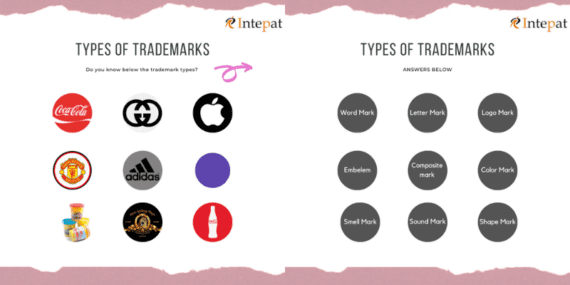Trademark Meaning & Definition
A “Trademark” [TM] is defined under Section 2(zb) of the Indian Trademarks Act, 1999, as a “mark capable of being represented graphically and which is capable of distinguishing the goods or services of one person from those of others and may include a shape of goods, their packaging, and combination of colors.”
Simply put, a trademark may include a device, brand, heading, label, ticket, name, signature, word, letter, numeral, shape of goods, packaging, or combination of colors or combinations. (Section 2(m)). The only qualification for a trademark is its capacity to distinguish one person’s goods or services from another.
There is usually a lot of confusion surrounding the kind of trademarks that can be registered under the Trademarks Act 1999. While choosing an apt brand that can be registered might seem a long-drawn process, it is straightforward, and the trick is conversing with what cannot be registered.
The Trademarks Act (1999) makes this easy by dividing what cannot be registered into two grounds: absolute grounds of refusal (Section 9) and relative grounds of refusal (Section 11).
What Cannot be Registered As A Trademark
Section 9, put, disallows the following trademarks from being registered trademark:
Trademarks that do not have a distinctive characteristic. This means that trademarks that cannot distinguish one person’s goods or services from another cannot be registered. The whole purpose of trademark law is to enable distinction between brands, and no mark that takes away from this purpose can be registered. Trademarks that are arbitrarily chosen or fanciful can be considered the most distinctive trademark.
Trademarks that describe the good or service give the consumer an idea about the quality, quantity, or geographic origin of the particular good or service. For instance, the mark ‘Cold and Creamy” is considered highly descriptive for ice cream products.
Marks that have become customary in the current language. For example, a consumer associates a restaurant with a chef.
Apart from this, deceptive marks that hurt religious sentiments are obscene or describe the shape of the good and cannot be registered.
Section 11 disallows the following from being registered trademarks:
Trademarks may cause a ‘likelihood of confusion.’ This means identical marks on similar goods and similar marks on identical/similar goods. A consumer views the trademark entirely, and the test is to see if the consumer can distinguish between similar brands.
For example, In Society Des Products vs. V.M. Confectionary Limited, the court held that the words ZERO and AERO be similar as mere phonetic dissimilarity was not enough to enable an ordinary person to distinguish between the two.
Well-known: Trademarks that people are familiar with cannot be registered even if the goods are not similar, as this would affect the reputation of the person who owns the well-known trademark.
In a nutshell, trademarks that are not distinctive, that are descriptive, or that give rise to a likelihood of confusion cannot be registered.
Registrable Trademark
This brings us to the most critical question of which trademarks are registrable in India.
On the spectrum of registrability, invented/fanciful words rate first. Words that have no meaning and are a random combination of two or more words/letters are invented words. Almost on an equal footing are arbitrary trademarks. Trademarks are familiar names but are unrelated to the goods or services they represent.
At the other end are trademarks that cannot be registered. They are descriptive and generic trademarks. (As has already been mentioned under Section 9)
In between are suggestive trademarks. They may or may not be registrable depending on the extent to which they suggest the nature of the goods/services. This means that suggestive trademarks that require a certain amount of imagination to determine the nature of the goods and services can be registered.
As long as your trademark differs from existing trademarks and does not describe the nature of the goods or services it represents, it can be registered!
Now let us dive into understanding the types of trademarks and types of trademark applications.
Types of Trademarks
Types of trademarks include service marks, collective marks, certification marks, etc. Whatever the trademark type, the trademark’s purpose is the same. Particularly to distinguish the source of the goods or services. And also assure the consumers of the quality of the product or service. A trademark can be divided into the following seven categories:

1. Word marks:
Word marks may be words, letters, or numerals. A word mark only gives the proprietor a right to the word, letter, or numerical, and no right is sought concerning the representation of the mark.
2. Device marks:
A device mark uniquely represents a logo, label, or design in the image format and may also contain a word or a combination of words.
3. Service marks:
A service mark is nothing but a mark that distinguishes one person’s services from another. Service marks do not represent goods but the services offered by a person/ company.
They are used in a service business where actual goods under the mark are not traded. It is a mechanism available to protect marks used in the service industry.
Thus companies providing services like computer hardware and software assembly and maintenance, restaurant and hotel services, courier and transport, beauty and health care, advertising, publishing, education, and the like are now in a position to protect their names and marks from being misused by others. As service marks, the substantive and procedural rules governing the service marks are fundamentally the same.
4. Collective Marks:
Marks being used by a group of companies can now be protected by the group collectively. Collective marks inform the public about a particular product feature used for the collective mark. The owner of such marks may be an association, public institution, or cooperative. Collective trademarks are also used to promote particular products with certain characteristics specific to the producer in a given region.
5. Certification Marks:
Certification marks are used to define standards. They assure the consumers that the product meets specific prescribed standards. A certification mark on a product indicates that the product has successfully passed a standard test specified. It assures the consumer that the manufacturers have gone through an audit process to ensure the quality of the product.
For example, Toys, Electrical goods, etc., have a marking that indicates the product’s safety and quality.
The difference between the certification mark and the collective mark is that a particular enterprise or association member uses the collective mark. In contrast, a certification mark may be used by anybody who meets the defined standards.
6. Well-known marks:
When a mark is easily recognized among a large percentage of the population, it achieves the trademark status of a well-known mark. Well-known marks enjoy more excellent protection, and persons will not be able to register or use marks imitations of well-known trademarks. A trademark needs to be known/recognized by a relevant section of people to be well-known. These people include actual or potential customers, people involved in the distribution, and business service dealing with the goods/services. Now you can declare your mark as well-known and learn more details here.
7. Unconventional Trademarks:
The trademarks that get recognition for their inherently distinctive feature are unconventional.
Unconventional trademarks include the following categories:
Colour Trademark: If a particular color has become a distinctive feature indicating the goods of a specific trader, it can be registered as a trademark. For example, Red Wine.
Sound Marks: Signs that are perceived by hearing and distinguishable by their distinctive and exclusive sound can be registered as sound marks. For example, Musical notes.
Shape Marks: When the shape of goods or packaging has some distinctive feature, it can be registered. For example, Ornamental Lamps.
Smell Marks: When the smell is distinctive and cannot be mistaken for an associated product, it can be registered as a smell mark. For example, Perfumes.
Types of Trademark Applications
Single class application
When we file an application under a single class of goods and services using Form TM-A, the application is known as a single trademark application. The applicant (individual) must pay the prescribed fee of Rs.4500/- for e-applications and Rs.5000/- for manual filing. It is relatively simple and easier to obtain a trademark under one particular class.
Multiclass application
When an applicant wishes to register one trademark under multiple classes, the trademark is known as a multiclass trademark application. The applicant should fill in Form TM-A to file a multiclass application. This type of application has less documentation as we file a single application for several classes. The applicant (individual) has to pay a fee of Rs.4500/- for filing under each class. Hence, if the applicant decides to file in 4 multiple classes, he should pay a fee of Rs. 18,000/- (Rs.4500 x 4).
However, there are chances for the entire application process to halt if the registry finds an issue in any one of the classes. Sometimes a third party may oppose one of the classes. If their opposition is valid, the whole application will be rejected even if the trademark is registerable under other classes.
Convention application
Section 154 of the Trademarks Act provides provisions for citizens from convention countries to file their trademark applications. After applying to one of the convention countries, one can file in India within six months. Under such circumstances, the trademark registration should be done as of the date on which it was filed in the convention country.
We must fill in FORM TM-A to file an application for a single class and multiple classes in a priority trademark application. This application holds a huge advantage for people seeking trademark protection in more than one country. It reduces the tedious task of filing trademark applications in several countries simultaneously. Furthermore, it provides ample six months to decide on the countries where the applicant wishes to seek trademark protection.
Series mark application
As the name suggests, this application facilitates the applicant to file more than one trademark in a single application through FORM TM-A. It is ideal for marks that are similar or less distinguishable from each other.
Besides, the marks should belong to the same description of goods or services under the Nice classification. Further, one cannot register through a series application if the marks fall under the same Nice classification but do not carry the same description. The material particulars of the mark should be similar. However, other non-distinctive features, such as color, size, quantity, etc, can vary. The ‘Mc’ in McDonald’s is a well-known series trademark. The products in their food chain are named Mcpuff, Mcnuggets, etc.,
Certification mark application
This special type of trademark indicates that a product or service meets a particular standard. Suppose a product or service carries a certification trademark. In that case, it means that the product is made of a specific material, manufacturing process, and origin and meets the quality standards of the certification mark.
The ISI, Woolmark, and Organic India are popular certification trademarks prevalent in India. One can use form TM-A to file for certification marks under single and multiple classes, respectively.
Collective mark application
Organizations where the members identify themselves with a certain level of accuracy, origin, quality, or other standards set by the association file for collective trademarks. Any organization willing to file a collective trademark application should submit three copies of the FORM TM – A to the trademarks office. The form will carry information on details of the members, individuals authorized to use the mark, membership norms, etc.
Only members of the organization can utilize this mark. For example, only the Institute of Charted Accountants members can utilize the mark ‘CA.’
“On the whole, a trademark is an essential means to protect the goodwill and reputation of a business. While filing a brand, the applicant can choose any trademarks mentioned above based on the mark’s nature and also should choose a trademark application that suits their needs.”




